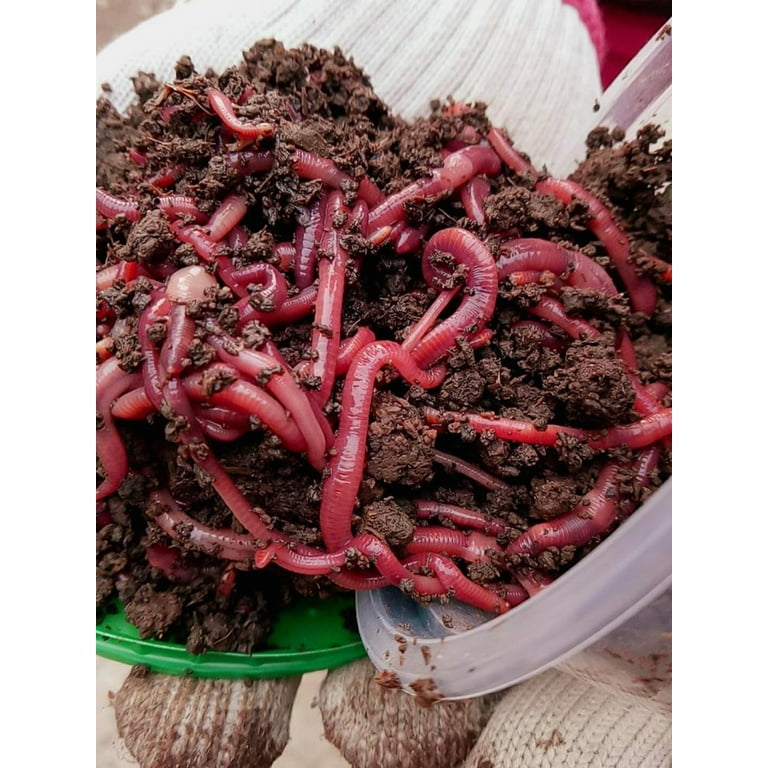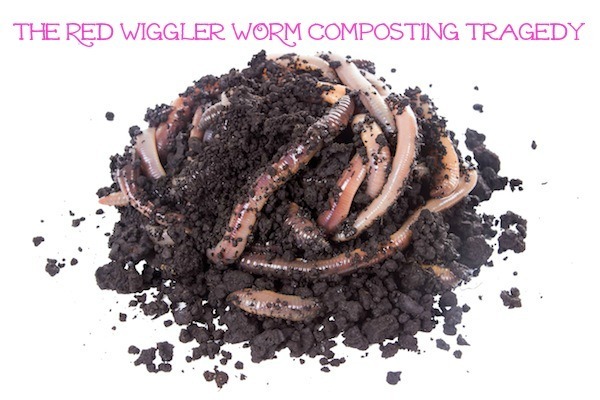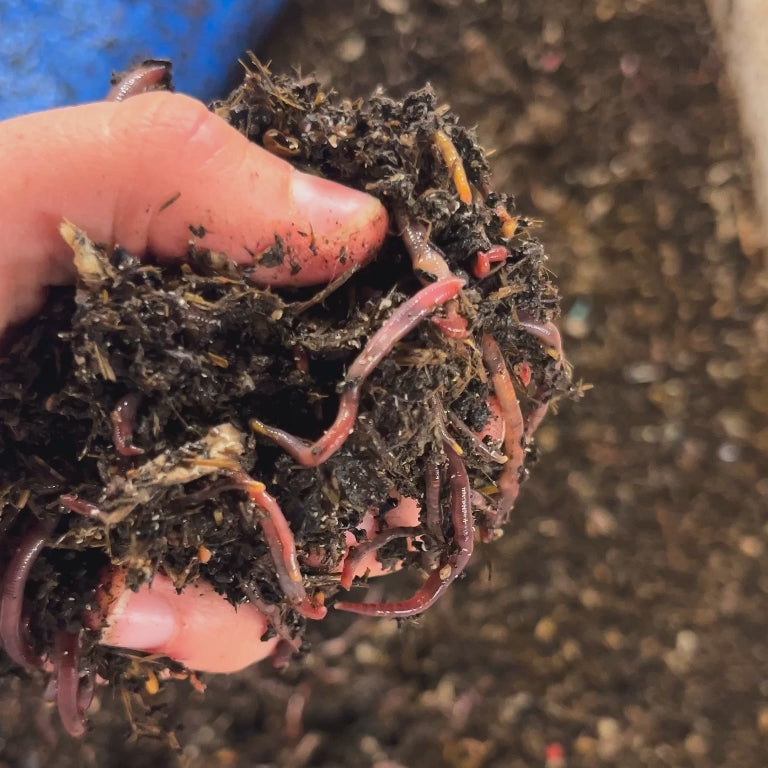The Ultimate Red Wiggler Composting Checklist for Successful Vermiculture
Wiki Article
Exploring the Devices of Red Wiggler Composting: A Comprehensive Guide to the Refine and Its Favorable Influence on Lasting Gardening Practices
The intricate mechanisms of red wiggler composting, making use of the unique physiology of Eisenia fetida, present an engaging avenue for improving sustainable gardening practices. This process not only changes natural waste right into nutrient-dense vermicompost yet likewise promotes a healthier soil ecological community via enhanced aeration and microbial activity. As urban gardening gains traction, recognizing the subtleties of this composting approach comes to be increasingly relevant. Nonetheless, the trip right into its myriad advantages and finest methods is just beginning, prompting a more detailed exam of just how this technique can reshape our gardening approaches.Recognizing Red Wigglers
Red wigglers, clinically referred to as Eisenia fetida, are a varieties of earthworm highly concerned for their performance in composting natural waste. These worms grow in nutrient-rich settings, especially in decomposing raw material, making them ideal for vermicomposting systems - Red Wiggler Composting. Characterized by their reddish-brown pigmentation and segmented bodies, red wigglers are smaller sized than common earthworms, commonly gauging between 3 to four inches in sizeTheir unique physical characteristics boost their composting capabilities; as an example, they possess a high reproductive price, enabling populaces to multiply quickly under ideal problems. Red wigglers consume natural product, simplifying with their gastrointestinal systems, which results in nutrient-rich castings that offer as an exceptional organic plant food. Their starved appetite allows them to refine huge quantities of food waste efficiently, considerably minimizing garbage dump contributions.
In addition to their composting prowess, red wigglers play an essential function in soil health. Red Wiggler Composting. They aerate the soil and promote the decay of natural matter, more enhancing the soil ecosystem. Recognizing the attributes and environmental benefits of red wigglers is crucial for any person wanting to implement lasting horticulture methods through efficient composting approaches
The Composting Process
The composting process involves damaging down organic products right into nutrient-rich garden compost, a task that red wigglers succeed at as a result of their specialized digestive systems. These worms eat food scraps, backyard waste, and other organic issue, changing them into important compost with a collection of biological and chemical processes.Originally, the organic issue is combined with bed linen materials such as shredded paper or dried out leaves, producing an optimum environment for the worms. As the red wigglers ingest this blend, they break it down through their gut, where microbes even more decompose the material. This procedure generates warm, advertising microbial task, which speeds up disintegration.

Benefits of Red Wiggler Composting
Many garden enthusiasts and eco-conscious individuals identify the many benefits of red wiggler composting, making it a popular option for efficient waste monitoring. One of the main advantages is its capability to dramatically reduce organic waste in garbage dumps - Red Wiggler Composting. Red wigglers effectively break down kitchen area scraps and other eco-friendly materials, changing them into nutrient-rich vermicompost that enhances dirt health and wellnessFurthermore, red wiggler composting enhances dirt structure and fertility. The resulting vermicompost is teeming with helpful bacteria, which promote plant growth and improve nutrient retention. This all-natural fertilizer not just sustains lasting gardening techniques but likewise lowers dependence on chemical fertilizers, fostering a much healthier community.
Furthermore, red wiggler composting is a space-efficient approach, making it perfect for metropolitan garden enthusiasts with minimal space. The process can be carried out inside your home or outdoors, allowing for year-round composting no matter of environment problems. Furthermore, red wigglers are low-maintenance organisms that need minimal care, making them easily accessible for amateur garden enthusiasts.
Fundamentally, the benefits of red wiggler composting prolong past waste decrease; they add to healthier soils, sustainable gardening practices, and environmental stewardship, placing it as a valuable practice in modern gardening.
Best Practices for Composting
For successful red wiggler composting, adhering to best methods is important to make the most of effectiveness and make sure an effective setting for these worms. It is crucial to preserve an appropriate carbon-to-nitrogen ratio, ideally around 30:1. This equilibrium promotes optimum disintegration and click for source boosts the worms' health. Include a mix of eco-friendly products, such as vegetable scraps, and brownish materials like shredded paper or cardboard.
Next, display moisture degrees, aiming for a moist, sponge-like uniformity. Overly damp conditions can bring about anaerobic decomposition, while extreme dry skin may impede worm task. Furthermore, ensure appropriate oygenation by transforming the compost frequently, which aids avoid compaction and permits sufficient oxygen flow.
Temperature level is an additional essential aspect. Preserve a variety of 55 ° F to 77 ° F(13 ° C to 25 ° C) to advertise worm activity and microbial growth. Stay clear of introducing meat, dairy products, and oily foods, as these can bring in parasites and create odors.
Enhancing Lasting Horticulture
Lasting horticulture personifies an all natural strategy that harmonizes ecological principles with useful horticulture techniques. By including approaches such as red wiggler composting, garden enthusiasts can considerably enhance their methods, cultivating an extra resistant community. Red wigglers, renowned for their efficient decomposition capabilities, transform natural waste right into nutrient-rich garden compost, consequently improving the dirt without depending on chemical plant foods.Implementing lasting gardening methods, such as crop rotation, companion growing, and mulching, further enhances the advantages of other composting. These practices not only enhance soil framework and fertility yet likewise advertise biodiversity, drawing in advantageous insects and microorganisms that add to plant wellness. Making use of native plants can lower water intake and lessen maintenance, aligning with water preservation efforts.

Verdict
In final thought, red wiggler composting stands for an essential approach for enhancing lasting gardening practices. Eventually, the adoption of red wiggler composting can substantially add to eco-friendly gardening, benefitting both metropolitan and beginner gardeners in their growing efforts.The complex devices of red wiggler composting, making use of the one-of-a-kind physiology of Eisenia fetida, offer an engaging method for boosting lasting horticulture techniques. Comprehending the characteristics and environmental advantages of red wigglers is necessary for any individual looking to apply sustainable horticulture techniques with efficient composting techniques.

In final thought, red wiggler composting represents an important approach for boosting sustainable gardening practices. Inevitably, the adoption of red wiggler composting can dramatically contribute to eco-friendly horticulture, profiting both metropolitan and newbie garden enthusiasts in their cultivation initiatives.
Report this wiki page